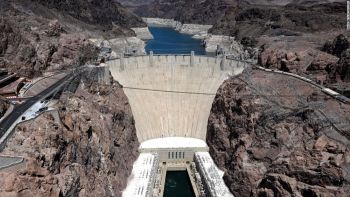Arch Dams: Difference between revisions
From ASDSO Dam Safety Toolbox
No edit summary |
No edit summary |
||
| Line 18: | Line 18: | ||
#[[Design and Construction of Arch Dams]] | #[[Design and Construction of Arch Dams]] | ||
#[[O&M of Arch Dams]] | #[[O&M of Arch Dams]] | ||
#[[ | #[[Decommissioning]] | ||
</br> | </br> | ||
<!-- Revision history information --> | <!-- Revision history information --> | ||
{{revhistinf}} | {{revhistinf}} | ||
Revision as of 14:07, 13 September 2022
Arch dams are typically rather thin in cross-section. The reservoir water forces acting on an arch dam are carried laterally into the abutments. The shape of the arch may resemble a segment of a circle or an ellipse, and the arch may be curved in the vertical plane as well. Such dams are usually constructed of a series of thin vertical blocks that are keyed together; barriers to stop water from flowing are provided between blocks. Variations of arch dams include multi-arch dams in which more than one curved section is used, and arch-gravity dams which combine some features of the two types of dams.

|
| The famed Hoover Dam, located along the Colorado River on the Nevada-Arizona border, is a prime example of a concrete arch-gravity dam. (CNN) |
Components of Arch Dams
[Paragraph here]
Life Cycle of Arch Dams
Revision ID: 2784
Revision Date: 09/13/2022
